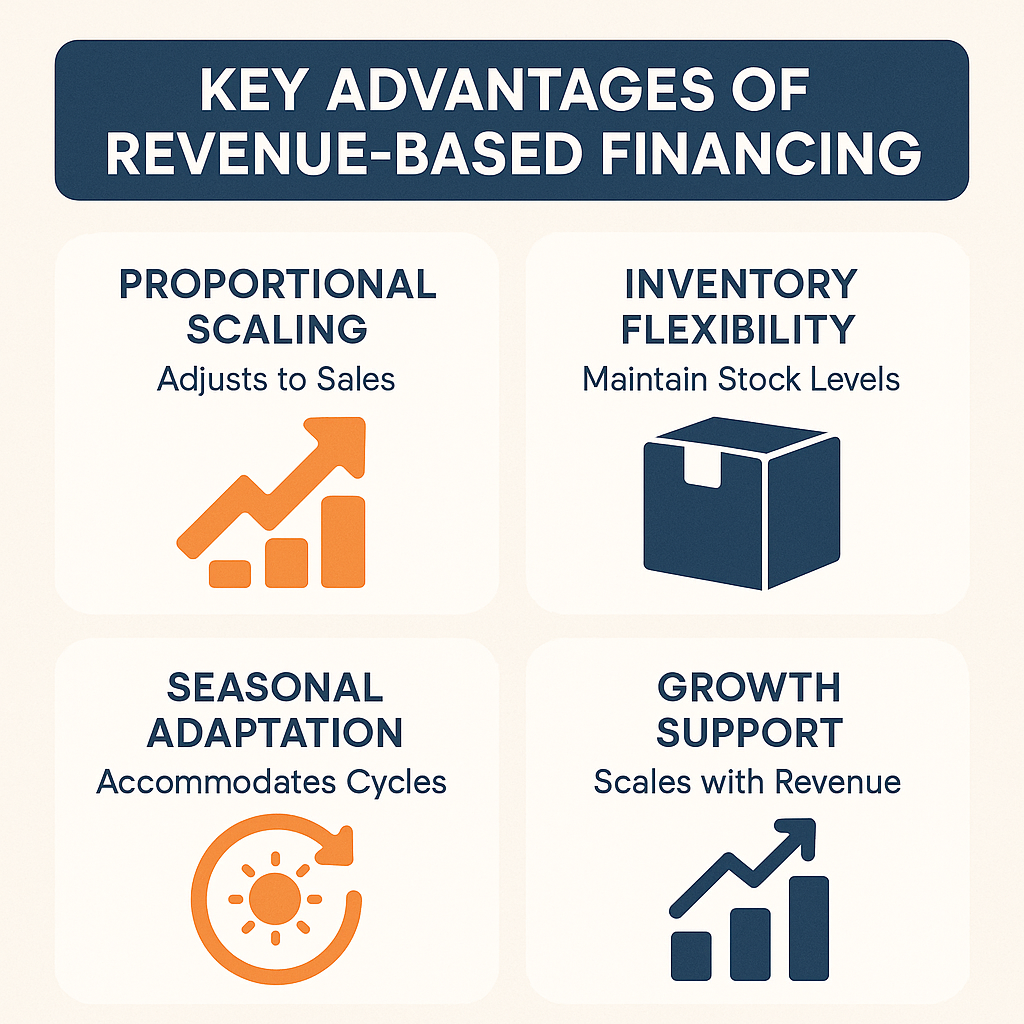Fast food restaurants face unique cash flow challenges with high-volume daily operations and fluctuating sales patterns. Revenue-based financing offers a flexible alternative that syncs repayments with actual revenue, providing the working capital needed without fixed monthly obligations that strain operations during slower periods.
Why Revenue-Based Financing Works for Fast Food
Revenue-based financing for fast food restaurants provides a payment structure that adapts to the natural rhythm of restaurant operations. Unlike traditional funding with fixed payments, this financing model calculates repayments as a percentage of daily sales, creating a more manageable cash flow scenario for establishments with varying income levels.
Fast food businesses typically experience seasonal fluctuations, weekend rushes, and slower weekday periods. This financing approach recognizes these patterns by reducing financial pressure during low-revenue days while allowing higher payments when sales are strong. The flexibility proves particularly valuable for restaurants that need to maintain liquidity for inventory, payroll, and unexpected operational expenses.
Setting Up POS Integration for Daily Repayment
Modern POS data integration enables seamless daily repayment sync, making revenue-based financing more efficient for fast food operations. Here's how the process typically works:
- Connect your POS system to the financing platform, allowing real-time sales data transmission for accurate payment calculations.
- Establish percentage terms that align with your restaurant's cash flow capacity, ensuring daily payments remain manageable even during busy periods.
- Set up automatic withdrawals that occur after daily sales are processed, creating a consistent repayment schedule without manual intervention.
- Monitor payment flows through integrated dashboards that show daily sales, payment amounts, and remaining balance in real-time.
Managing High-Volume Turnover with Flexible Payments

High-volume turnover in fast food restaurants creates both opportunities and challenges for financing repayment. Revenue-based financing addresses these dynamics through several key advantages:
- Proportional scaling: Payments automatically adjust to match daily sales volume, preventing cash flow strain during unexpected slow periods while capitalizing on busy days.
- Inventory flexibility: Variable payment amounts allow restaurants to maintain adequate inventory levels without worrying about fixed payment obligations that could impact purchasing decisions.
- Seasonal adaptation: The financing structure accommodates natural business cycles, from holiday rushes to summer slowdowns, without requiring payment modifications.
- Growth support: As restaurants expand operations or add new menu items, the percentage-based model scales with increased revenue rather than creating additional financial burden.
Protecting Liquidity During Market Changes
Liquidity protection becomes essential when fast food restaurants face unexpected market conditions or operational challenges. Revenue-based financing offers built-in safeguards that traditional funding options may not provide:
- Automatic payment adjustments: When sales decline due to external factors, payments decrease proportionally, preserving working capital for essential operations and recovery strategies.
- Cash flow preservation: The percentage-based structure ensures restaurants maintain adequate funds for payroll, utilities, and supplier payments even during challenging periods.
- Operational continuity: Flexible repayment terms reduce the risk of payment defaults that could disrupt business operations or damage vendor relationships.
- Recovery support: Lower payments during slow periods provide breathing room for implementing marketing campaigns, menu changes, or other strategies to boost sales.
Revenue-based financing represents a practical solution for fast food restaurants seeking capital that adapts to their unique operational patterns. By aligning repayments with actual sales performance and integrating with existing POS systems, this financing option provides the flexibility needed to maintain healthy cash flow while supporting growth opportunities in a competitive market.

.png)






